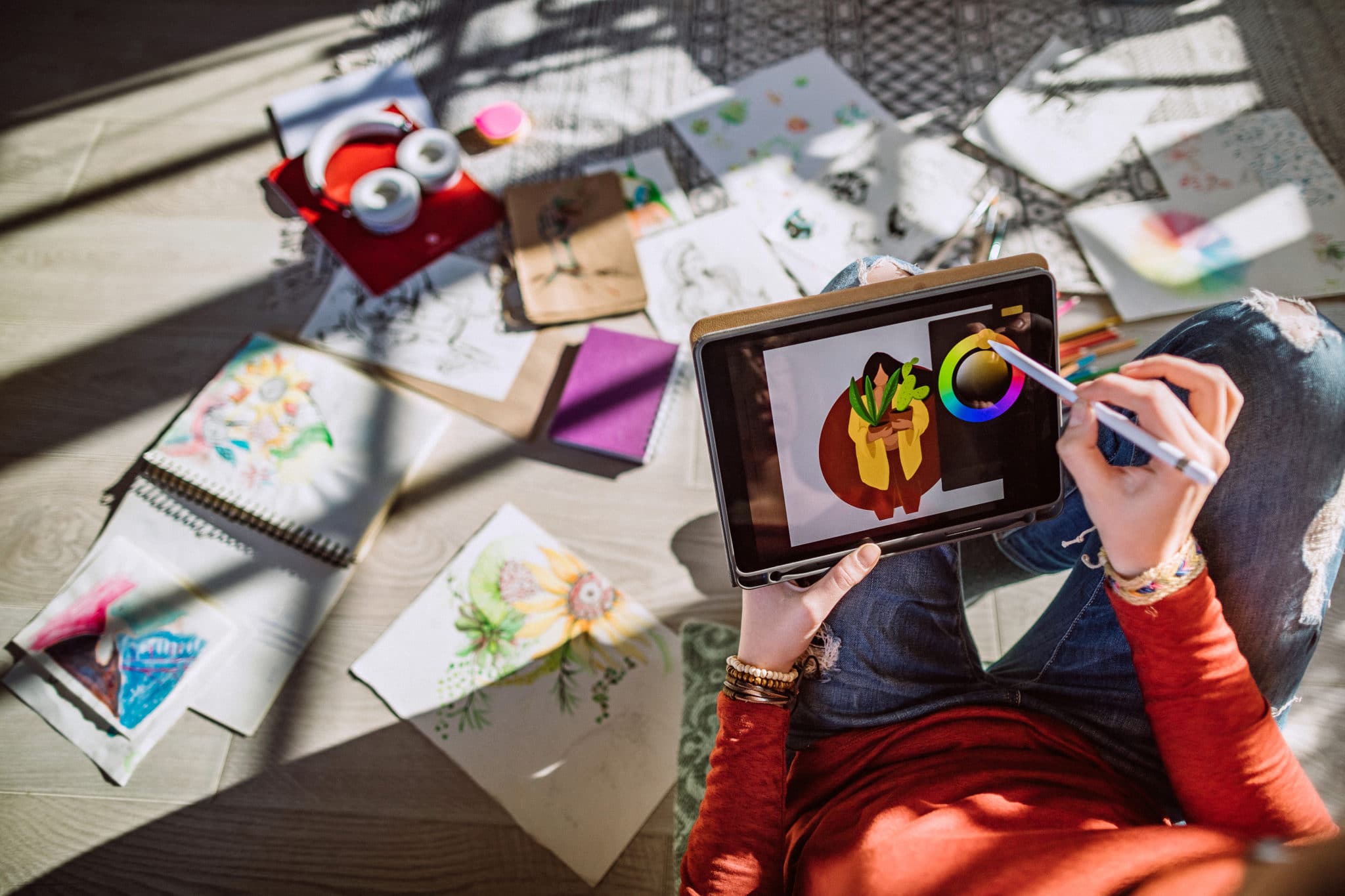Creating art can be incredibly rewarding, but the tools and supplies needed can also be pricey. Unfortunately, this initial cost can make it difficult to break into the world of art and design. Thankfully a graphics and drawing tablet can help cut long-term supply costs, so you can make art without breaking the bank.
Tablet Features & Considerations
If you’re new to the world of digital art, you may be surprised by just how much goes into choosing a drawing tablet. There are plenty of features to consider, and you may find yourself bogged down by terms and acronyms that you just don’t understand. So for the uninitiated, there are only a few features that really matter:
- Pressure sensitivity: how sensitive the tablet is to weight and touch
- Driver stability, program compatibility, and input lag: how quickly lines appear on the screen
- Resolution: how much detail can you add to your drawing (measured in lines per inch)
If you choose a tablet that optimizes these three features, you shouldn’t have any problem creating amazing art. Professional digital artists often prefer to use a tablet that has additional features like multitouch and tilt recognition. These features give the tablet the same functions as a laptop touchpad and offer greater control and image manipulation.
Ultimately, though, a lot of the features of your tablet come down to preference. As long as you find one with good pressure sensitivity, minimal lag, and acceptable resolution, you should be good to go.
Our Drawing Tablet Recommendation
For general use by artists of all levels, we recommend the Wacom Intuos S. The Intuos S has a user-friendly interface and comes with a few bare essentials—just the basics, but more than enough to get started.
This graphic tablet is reliable, long-lasting, and compact enough for the creative on the go. With an area of 7.9×6.3 inches, you can carry this lightweight tablet and stylus (digital pen) combo anywhere. The Intuos S connects to your computer or laptop using a USB cable and includes bonus Corel software to help create and edit your art. You can buy the Intuos S for $75-$100, depending on the vendor.
Advanced artists and professionals may elect for an upgraded model like the Wacom Intuos Pro—considered the gold standard of graphic tablets. The Pro is available in various sizes (Pro S, M, and L) and price tags, but the additional features and investment may not be right for a beginner.
A Stylus Is All You Need if You’re Not Ready to Commit to a Drawing Tablet
Maybe you already have a tablet—albeit a tablet that’s not created specifically for digital artists. If that’s the case and you have a large screen smart device already, like an Apple iPad Pro or an Android tablet, it’s pretty simple to transform it into a tool for creating digital art. All you need is a stylus that’s compatible with your device. A stylus is a digital pen that works just like your finger does on a touchscreen. And if budget is a consideration, purchasing a stylus alone is usually less expensive than purchasing a tablet and stylus combo.
If you’re an Android user, there are a multitude of stylus choices out there for you. We recommend the Meko Universal 2-in-1 Stylus for ultimate versatility and affordability, or the Staedtler 180 22-1 Noris Digital for handling and quality.
But if you’re an Apple user, there’s only one way to go: the Apple Pencil. You can, however, choose between the first and second-generation models. Both have the same essential function, with:
- Easy wireless pairing and charging
- Pixel-perfect precision
- Practically imperceptible lag
- Unparalleled tilt and pressure sensitivity
At $169, the second-generation model may cost a little extra than its predecessor, but it also comes with a host of additional features, including magnetic attachment to your device and double-tap to change tools. You can even get your Apple Pencil engraved for free.
Don’t Forget Art Software for Your Drawing Tablet
Good software isn’t just for the pros. Fortunately, there are plenty to choose from, with a range of capabilities and price points. For best general use software, we recommend:
With all the right tools in your kit and some practice under your belt, you’ll be well on your way to becoming a digital artist in your own right. Now go forth and create something remarkable!






